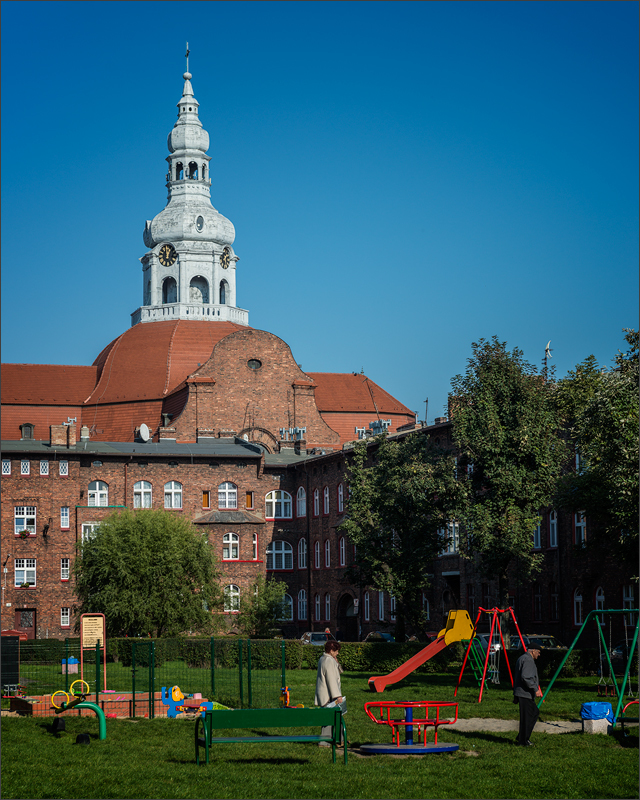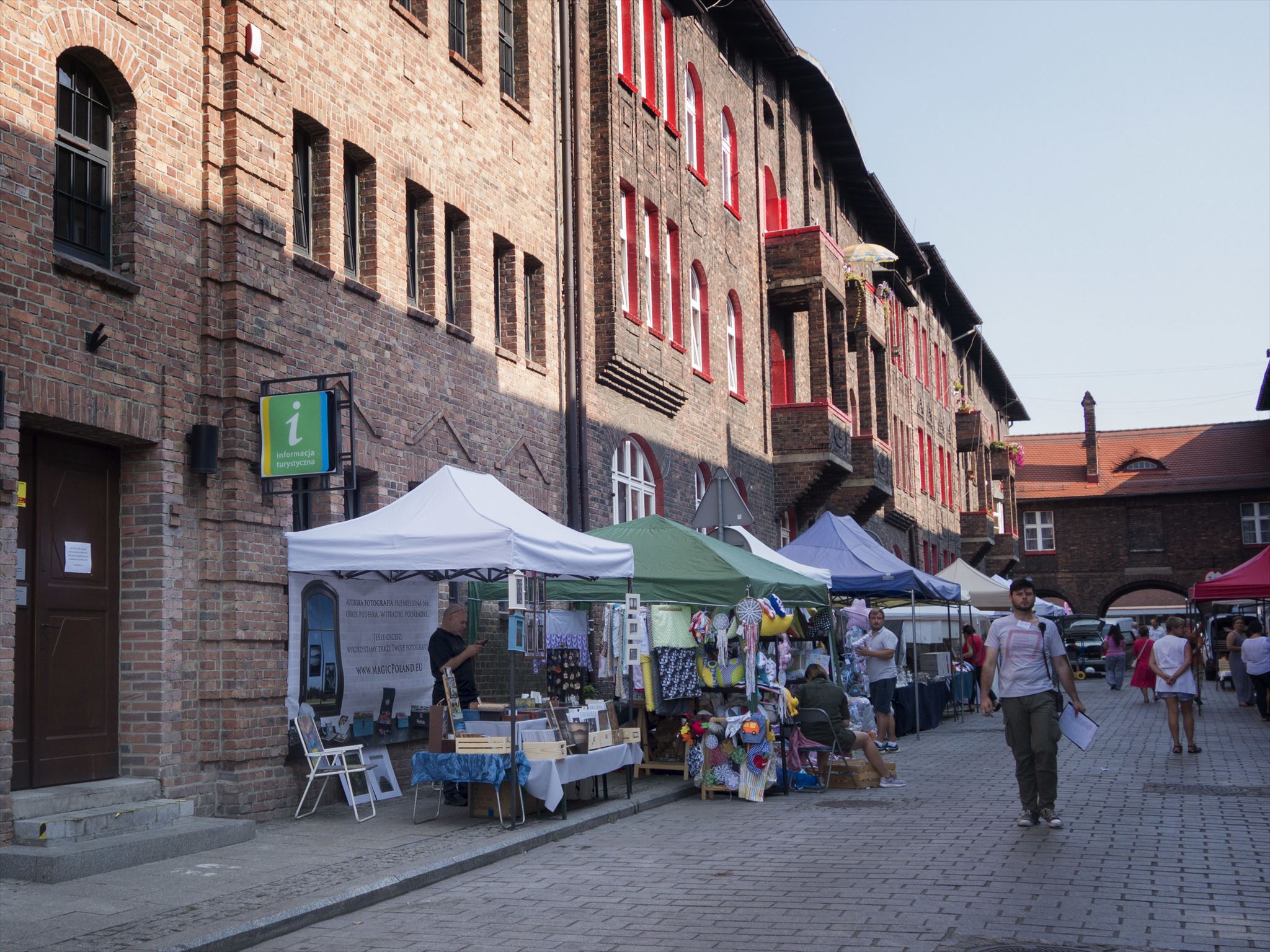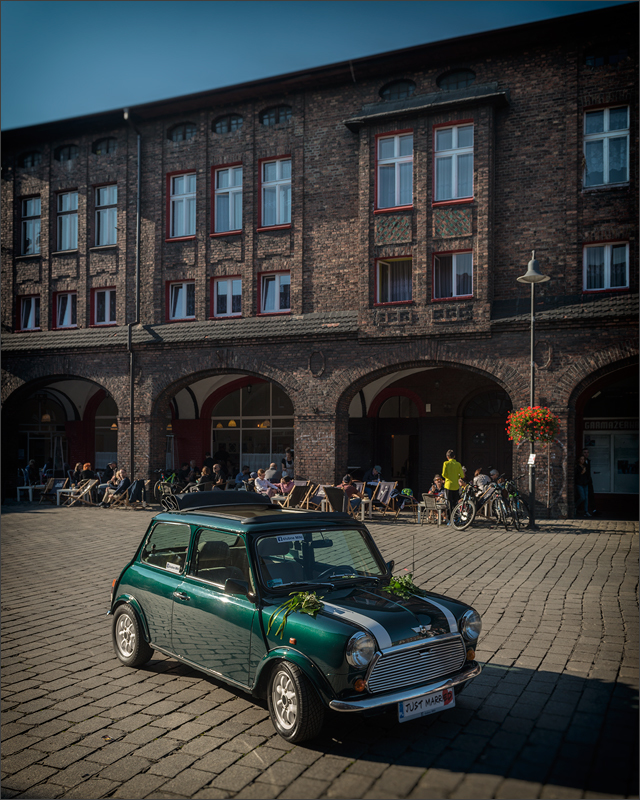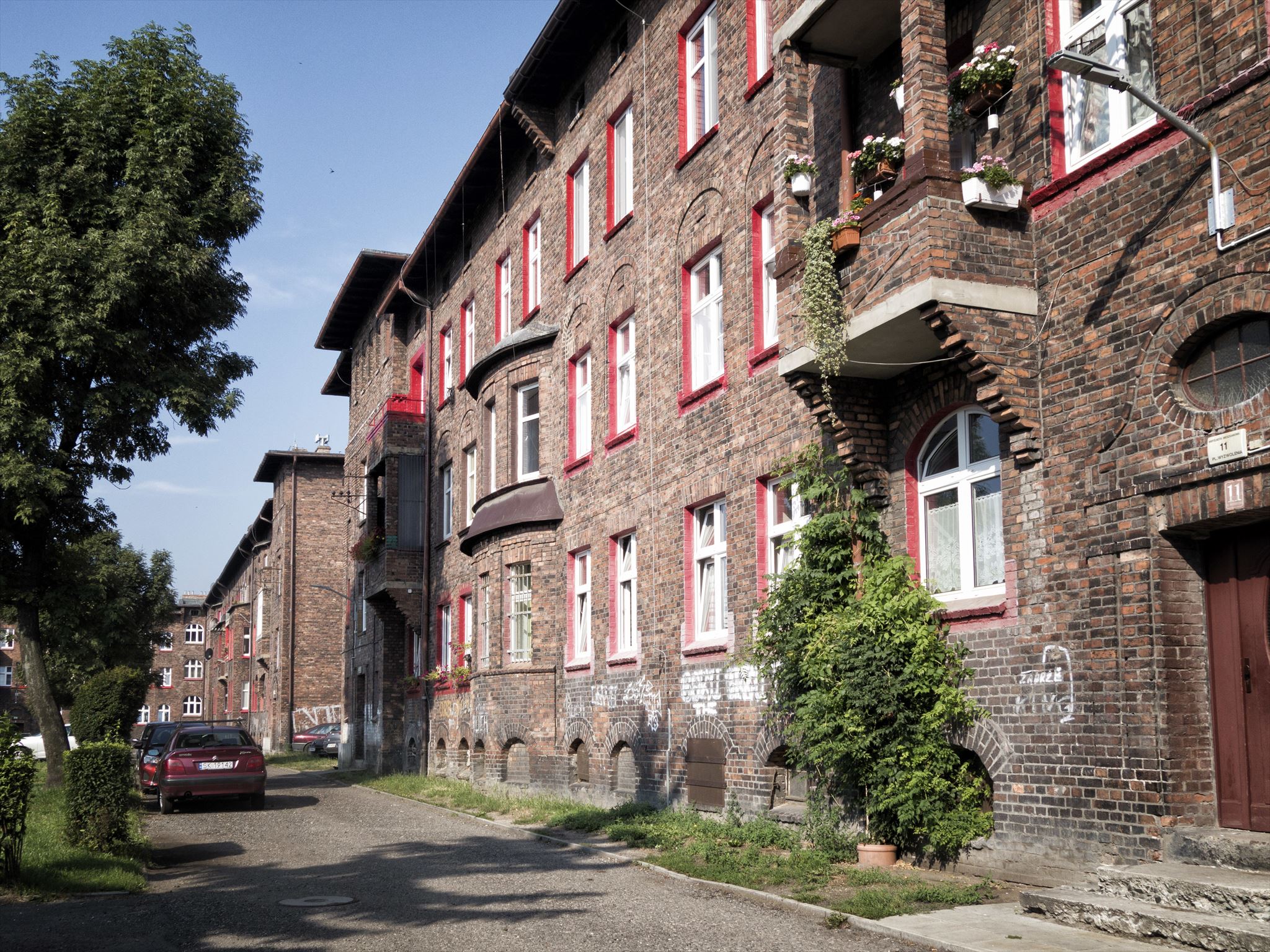Ceglane familoki Nikiszowca tworzą jeden z najbardziej oryginalnych zabytków nie tylko Katowic, ale całego Górnego Śląska.
Początki osiedla to lata 1908 - 1918, kiedy to pod okiem architektów Emila i Georga Zillmannów wybudowano około 1000 mieszkań dla robotników kopalni Giesche. Najbardziej typowe miały powierzchnię około 63 metrów i składały się z 2 pokoi z kuchnią.
Charakterystyczną zabudowę tworzą ułożone w czworoboki dwupiętrowe domy z czerwonej cegły. Wewnątrz czworoboków znajdziemy całkiem spore dziedzińce, na których dawniej mieściły się komórki, piece do wypieku chleba, a także chlewiki w których hodowano drobniejsze zwierzęta. Tu toczyła się spora część codziennego życia górników i ich rodzin. Osiedle było dla nich nie tylko noclegownią, ale miejscem całego życia. Poza mieszkaniami powstał więc kościół, park, łaźnia, dom noclegowy, sklepy, szkoła z mieszkaniami dla nauczycieli, pralnia z maglem. Przy głównym placu, w do dziś wyróżniającym się budynku ozdobionym różami, mieściła się gospoda.
Po wojnie osiedle nieco podupadło, ciesząc się niezbyt dobrą renomą ubogiej robotniczej dzielnicy. W 1978r. doceniono jego walory wpisując osiedle do rejestru zabytków. Od kilku lat powoli zmienia swój charakter z robotniczego, na artystyczno-turystyczny. Zresztą, artystyczne tradycje Nikiszowca są dość bogate - to tutaj działało skupione wokół Teofila Ociepki Koło Malarzy Nieprofesjonalnych, czyli Grupa Janowska.
Do zdobycia kesza wystarczy krótka wizyta na Nikiszowskim rynku, ale bardzo zachęcam do dłuższego spaceru po całym osiedlu. Jego kompozycję najlepiej docenicie przyglądając się makiecie przed kościołem (lub zdjęciom zrobionym z lotu ptaka). Spacerując pomiędzy familokami można za to dostrzec, że mimo jednolitej konstrukcji nie ma tu monotonii - budynki różnią się detalami, zdobieniami, lekkości dodają im wykusze, łuki nad oknami, czy przewiązki. Warto zajrzeć do kościoła św Anny i zwrócić uwagę na witraże wykonane przez Georga Schneidera z Ratyzbony i zabytkowe organy braci Reiger. W mieszczącym się w dawnej pralni muzeum zobaczycie dawny układ i wyposażenie typowego górniczego mieszkania, dowiecie się też jakim wysiłkiem była czynność prania dla naszych prababek. A jeśli niestraszne Wam tłumy i dotrzecie tu akurat w czasie Odpustu Babci Anny lub Bożonarodzeniowego Jarmarku - może zobaczymy się na naszym stoisku z rękodziełem ;)
Na razie brak tu trochę typowo turystycznej infrastruktury, klimat psują wszechobecne samochody, przydałoby się więcej galerii, sklepików czy kawiarni. Ale z drugiej strony dzięki temu nie mamy wrażenia wizyty w muzeum, a w żyjącej własnym życiem dzielnicy miasta. Może warto odwiedzić ją właśnie teraz, zanim zmieni się w turystyczny skansen.

Aby zalogować kesza odwiedź trzy położone blisko siebie miejsca, związane z trzema różnymi aspektami życia Nikiszowca i odpowiedz na trzy pytania. Odpowiedzi prześlij w prywatnej wiadomości, nie zamieszczaj ich w logu!
1) Podejdź na koordynaty - jakie nazwiska widnieją na tablicy przed Tobą?
2) Mając kościół po prawej stronie, przejdź przez plac w stronę dawnej gospody. Z lewej strony budynku znajdziesz tablicę. O czym informuje? (Waypoint nr 1)
3) Wejdź na dziedziniec kościoła i skieruj się do muru po lewej stronie - komu poświęcone jest to miejsce? (Waypoint nr 2)
Do logu dołącz swoje zdjęcie (lub foto telefonu, GPS, kartki z nickiem) na tle dowolnego fragmentu Nikisza. Nie musi być to rynek, świetnie gdyby to było miejsce które jakoś specjalnie Cię urzekło lub wydało się najciekawsze. Logować można od razu po wysłaniu odpowiedzi, jeśli coś będzie nie tak - skontaktuję się z Tobą. Wpisy nie spełniające wymogów mogą zostać usunięte.

English version
With its red brick houses, the Nikiszowiec workers' settlement is one of the most interesting places not only in Katowice but also in the whole of Upper Silesia.
The beginnings of the estate date back to the years 1908-1918, when under the supervision of architects Emil and Georg Zillmann, a workers' housing estate for the employees of the Giesche mine was established. About 1000 apartments were built, the most typical of them were about 63 m² in size and consisted of 2 rooms with a kitchen. The characteristic buildings of Nikiszowiec are two-storey red brick houses. Between them you will find quite large courtyards, which once housed storage rooms, baking ovens, and sheds where smaller animals were bred. Much of the everyday life of miners and their families took place here. For them, the estate was not only a lodging place, but a place where they spent their entire lives. In addition to the dwellings, a church, a park, a bathhouse, a lodging house, shops, a school, a laundry with a mangle were built. At the main square, in the building decorated with roses, there was an inn.
After the Second World War, the estate deteriorated slightly, enjoying a not very good reputation as a poor working class district. In 1978, its values were appreciated by entering the estate in the register of historical monuments. For several years now, it has been slowly changing its character from a worker's settlement, to an artistic and touristic one. The artistic traditions of Nikiszowiec are quite rich - it is the place, where the group of non-professional painters- "Grupa Janowska" ("Janów Group"), gathered around Teofil Ociepka, operated.
To log a cache, just a short visit to the Nikisz market is enough, but I strongly encourage you to take a longer walk around the settlement. You will appreciate its composition best when looking at the model in front of the church (or pictures taken from the sky). Walking along the streets, you can see that despite the unified architecture there is no monotony here - the buildings differ in details, decorations, arches over the windows. It is worth to visit the church of St. Anne and pay attention to the stained glass windows made by George Schneider of Regensburg and the historic organ of the Rieger brothers. In the museum, located in the former laundry room, you will see the old furniture and equipment of a typical mining apartment, you will also learn how hard it was to do laundry for our great-grandmothers. And if you are not afraid of crowds and you will arrive here at the time of Christmas Market - maybe we will see you at our stand with handicraft ;)
At the moment, there is little typical tourist infrastructure here, the atmosphere is spoiled by omnipresent cars, more galleries, shops and cafes would be useful. But on the other hand, thanks to this, we do not have the feeling of visiting a museum, but a living city district. Maybe it's worth visiting it right now, before it turns into a tourist open-air museum.

To log the cache, visit three places close to each other and answer three questions. Send the answers in a private message, do not post them in the log!
1) Go to the coordinates - what names appear on the plaque in front of you?
2) With the church on your right, walk through the square towards the old inn. On the left side of the building you will find a plaque. What is the information about? (Waypoint 1)
3) Enter the courtyard of the church and head towards the wall on the left - to whom is this place dedicated? (Waypoint 2)
The plaques are only in Polish. If you do not understand the text at all, you can send me in a private message a text or a picture of each plaque.
Add a picture of yourself (or a GPS, mobile, card with your name on it etc) and your favorite place in Nikiszowiec to the log. Logs without images will be deleted. You can log the cache immidiately after sending the answers, you do not need to wait for confirmation. Entries that do not meet the requirements can be deleted.

Virtual Rewards 2.0 - 2019/2020
This Virtual Cache is part of a limited release of Virtuals created between June 4, 2019 and June 4, 2020. Only 4,000 cache owners were given the opportunity to hide a Virtual Cache. Learn more about Virtual Rewards 2.0 on the Geocaching Blog.